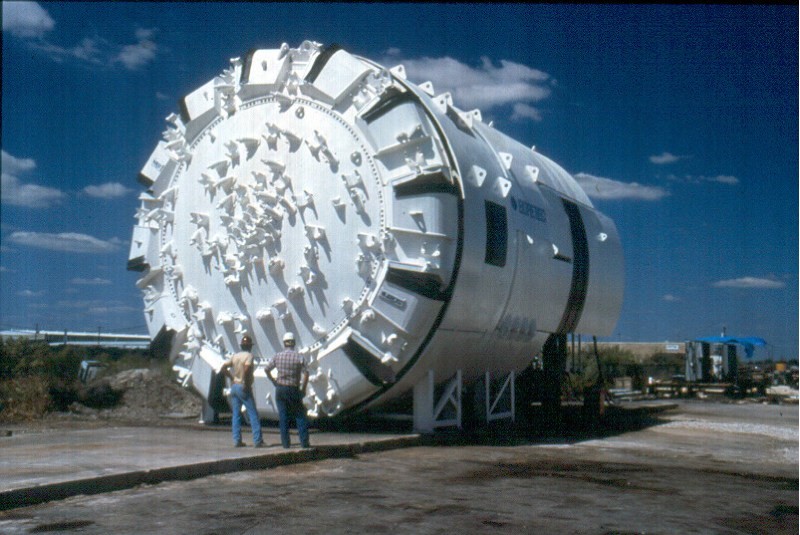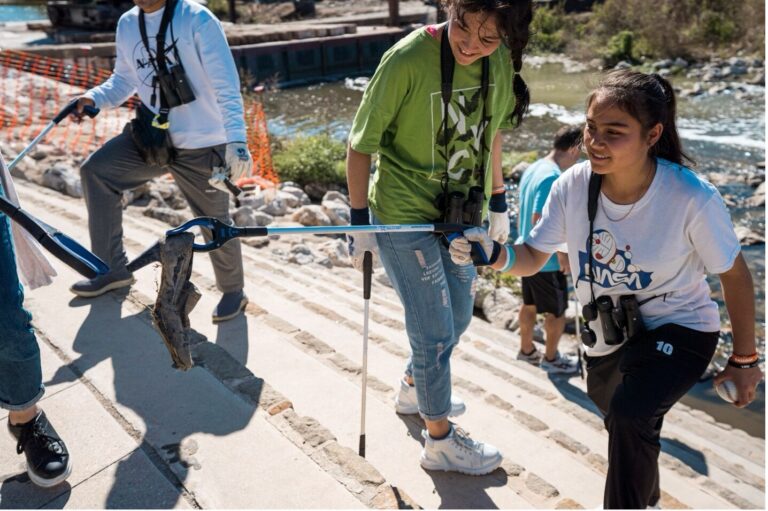Como parte de nuestro compromiso con seguro, limpio, agradable arroyos y ríos, la Autoridad del Río San Antonio (Autoridad del Río) emplea un enfoque integral para la mitigación de inundaciones. Las estructuras artificiales, como presas y túneles, están diseñadas para gestionar el flujo de agua de las inundaciones con el fin de proteger vidas y propiedades.
Durante más de veinte años, el Túnel del río San Antonio ha ayudado a proteger el centro de San Antonio de inundaciones dañinas, lo que a su vez ha ahorrado cientos de millones de dólares en daños a la propiedad. Obtenga más información sobre este proyecto de mitigación de inundaciones y el papel de la Autoridad del Río para hacer realidad este proyecto.
¿Qué llevó a la construcción del Túnel del Río San Antonio?
El Cuenca del río San Antonio tiene un largo historia de inundaciones. En 1954, después de una serie de inundaciones devastadoras en décadas anteriores, incluida una inundación en 1946 que causó daños importantes a la comunidad y se cobró la vida de cuatro personas, el Congreso de los EE. UU. autorizó el Proyecto de Mejoras del Canal del Río San Antonio (SACIP), que permitió al condado de Bexar y la Autoridad del Río para asociarse con el Cuerpo de Ingenieros del Ejército de EE. UU. para mejorar el control de inundaciones a lo largo de 31 millas del río San Antonio y sus afluentes. Esto implicó realineamiento y canalización del sistema fluvial para alejar rápidamente las aguas de las inundaciones de las áreas urbanizadas. La construcción del SACIP comenzó en 1958.
Para la década de 1980, se completó todo el trabajo de canalización del SACIP, pero aún existía la necesidad de mayor protección contra inundaciones para el centro de San Antonio. Los trabajos del SACIP continuaron con la construcción del Túnel del arroyo San Pedro se inició a finales de los años 1980 y se completó en 1991. El proyecto del túnel del río San Antonio, que era un proyecto más grande y complejo, comenzó en 1993 y se completó en diciembre de 1997 a un costo estimado de $111 millones. La Autoridad del Río administró ambos proyectos de túneles en asociación con el Cuerpo de Ingenieros del Ejército de EE. UU. El condado de Bexar y la ciudad de San Antonio también fueron socios en los proyectos.
Del 17 al 18 de octubre de 1998, el centro sur de Texas experimentó precipitaciones sin precedentes, y tanto los túneles del arroyo San Pedro como del río San Antonio funcionaron según lo diseñado, evitando que el centro de San Antonio sufriera una inundación devastadora. En 1999, el proyecto del túnel del río San Antonio ganó el Premio al Logro Sobresaliente en Ingeniería Civil del Estado de Texas de la Sociedad Estadounidense de Ingenieros Civiles; también recibió un Premio al Mérito a nivel nacional. Un año después, fue uno de los cuatro proyectos que recibieron el Premio Federal al Logro de Diseño del Fondo Nacional de las Artes (NEA), así como un premio al logro de la Sociedad Estadounidense de Ingenieros Civiles en reconocimiento a la entrada del túnel del río San Antonio. Sitio.
¿Dónde está ubicado el Túnel del Río San Antonio?
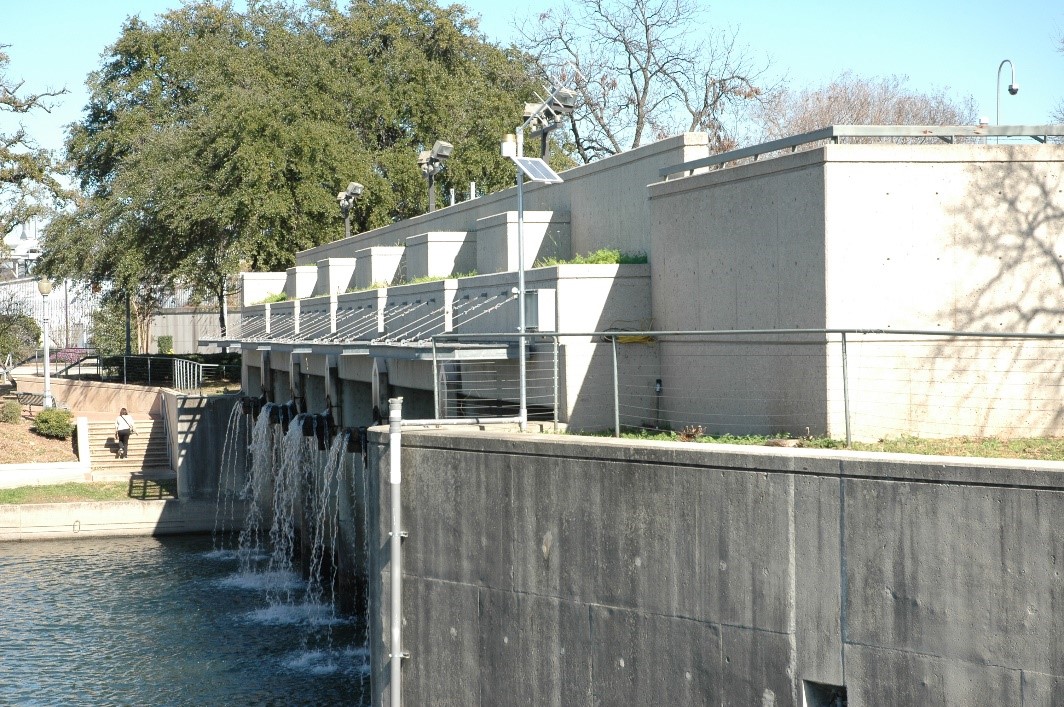
El pozo de entrada del túnel está ubicado entre West Josephine Street y la autopista 281 norte y ahora es parte del Paseo por el río Museum Reach San Antonio segmento. El contratista, BRH Garver Company, construyó la estructura de entrada para dirigir el agua del río San Antonio hacia el túnel y consta de una toma de 120 pies de largo que incluye rejillas giratorias para recolectar la basura antes de que pueda ingresar al túnel. La Autoridad del Río proporcionó paisajismo, una fuente de aireación de agua, desinfección y bombas de recirculación para recircular el agua desde el túnel hacia el río para complementar el flujo durante los períodos secos. Esto ayuda a que el River Walk siga fluyendo para el disfrute de visitantes y lugareños.
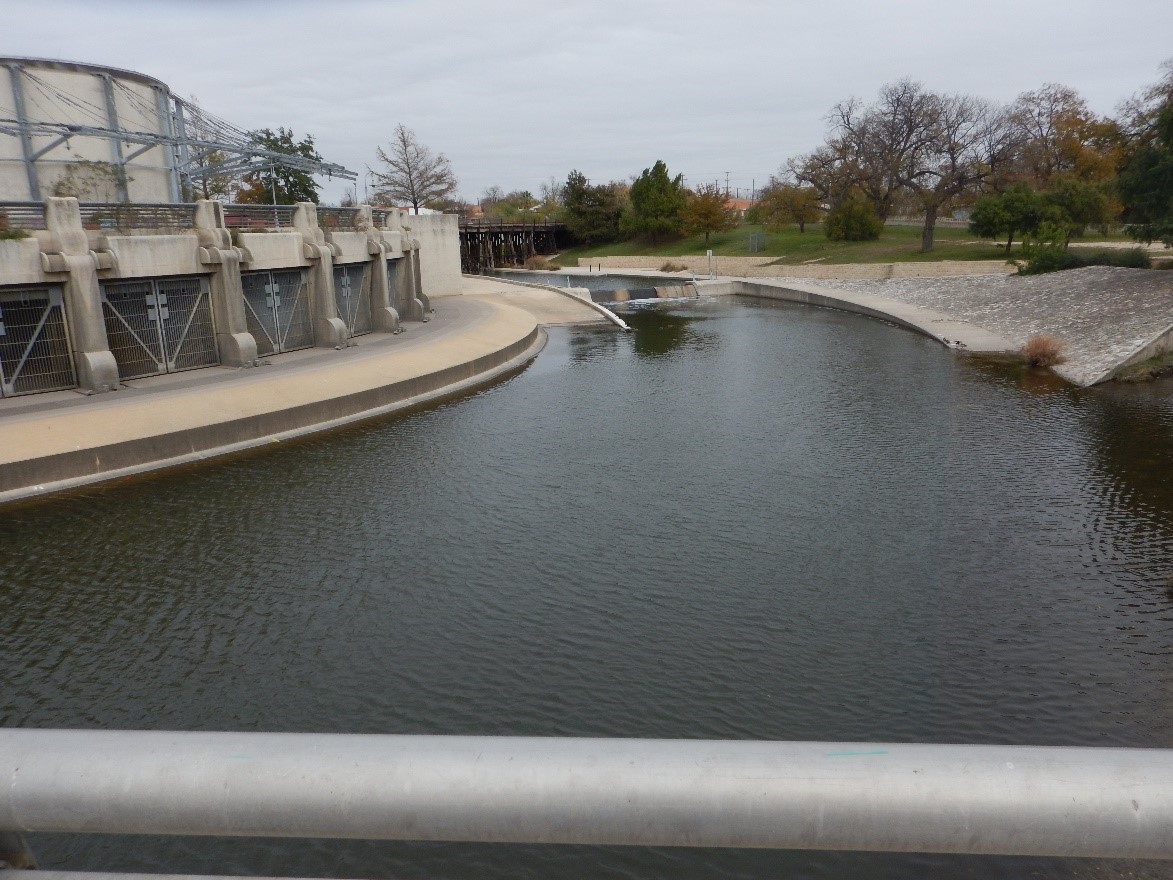
La estructura de salida del túnel está ubicada justo al norte de Lone Star Boulevard en la orilla oeste del río a lo largo de la Paseo por el río Mission Reach San Antonio segmento. Martin K. Eby Company construyó la estructura de salida del túnel que dirige la descarga desde el pozo del túnel hacia el río San Antonio. La estructura de salida mide 230 pies de frente y se incluyen elementos de agua para mejorar la apariencia de la estructura de salida.
¿Cómo funciona el túnel?
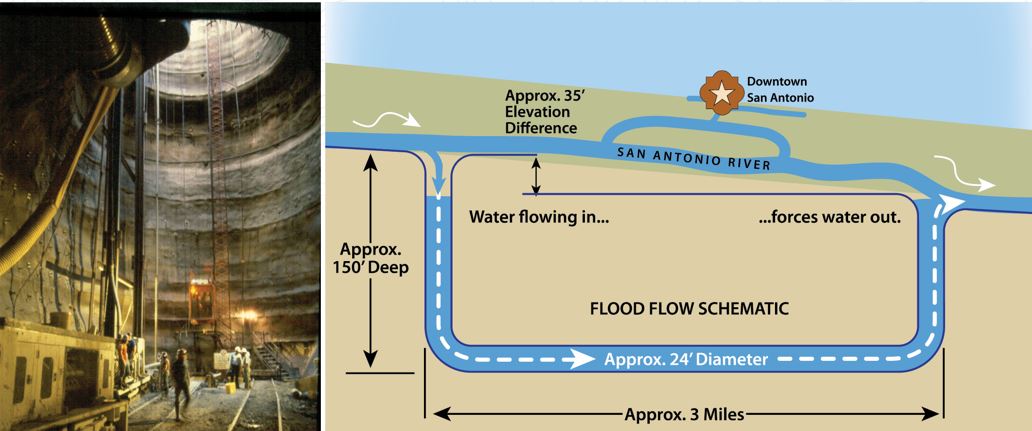
El túnel fue excavado por Ohbayashi Corporation, y el túnel de 3 millas de largo utiliza la gravedad para evitar las inundaciones bajo el centro de San Antonio. La estructura de entrada es aproximadamente 30 pies más alta que la estructura de salida, lo que permite que la gravedad empuje el agua a través del túnel y fuera de la estructura de salida de manera segura hacia el canal del río del segmento Mission Reach. ¡Durante inundaciones, el túnel puede mover hasta 3 millones de galones de agua por minuto!
Después de la construcción del proyecto, la Autoridad del Río y el Cuerpo de Ingenieros del Ejército de EE. UU. entregaron el túnel a la ciudad de San Antonio para operar y mantener el túnel.
¡Esperamos que haya disfrutado aprendiendo sobre este importante proyecto de mitigación de inundaciones! La próxima vez que visite el Paseo del Río San Antonio, esté atento a las estructuras de entrada y salida del túnel y comparta este conocimiento con sus amigos y seres queridos.

